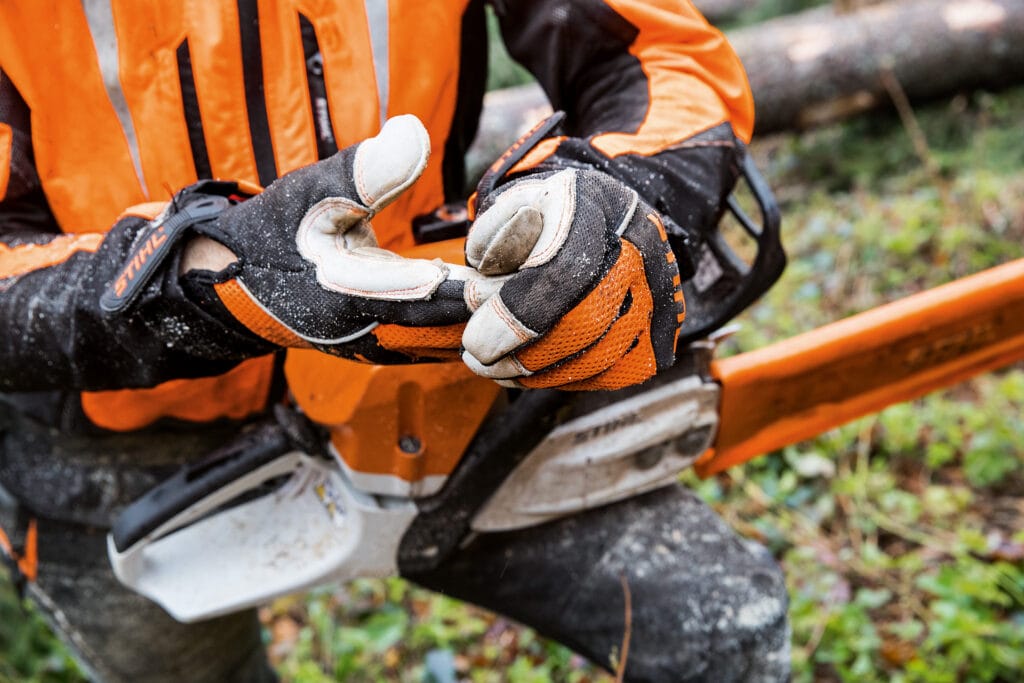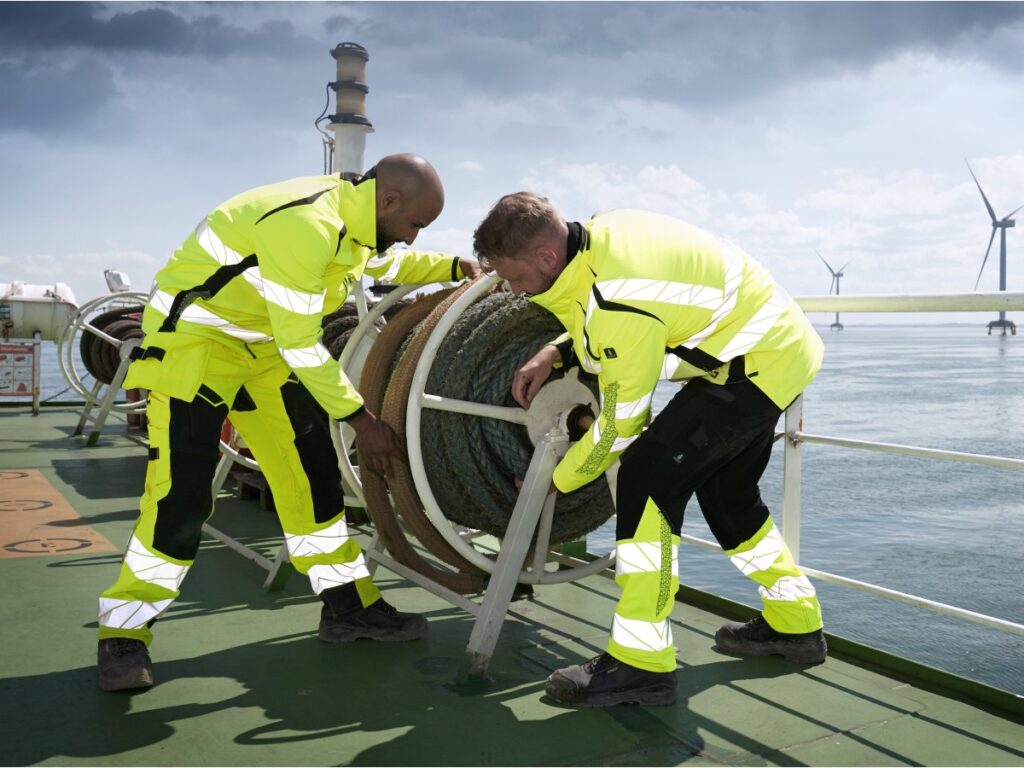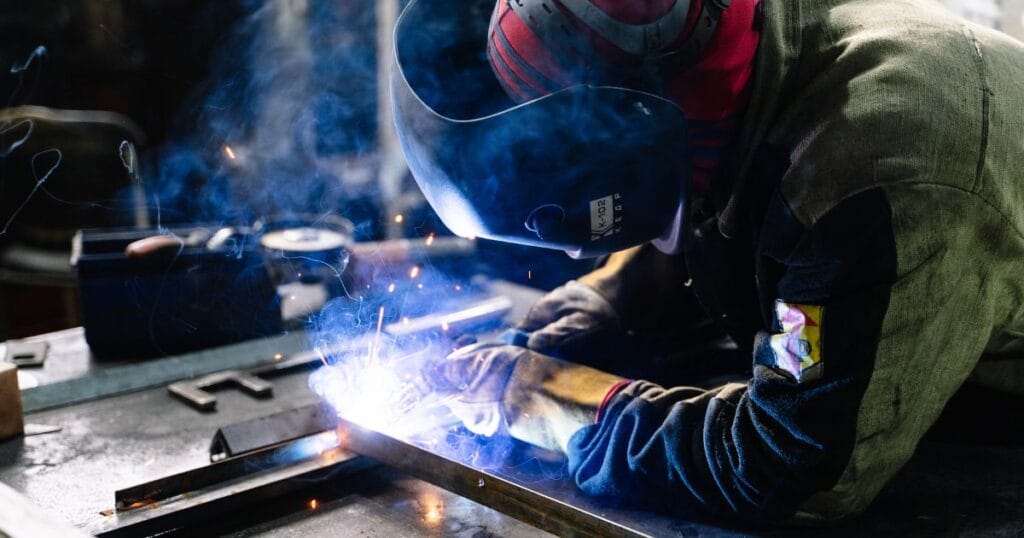
Introduction to Food Industry PPE: Hygiene, Safety, and Compliance
In the food industry, personal protective equipment (PPE) isn’t just about safety—it’s about protecting the product, your workers, and your reputation.
From hairnets to cut‑resistant gloves, the right PPE plays a critical role in maintaining hygiene, preventing contamination, and complying with food safety regulations like HACCP, ISO 22000, BRCGS, and FDA. But choosing, maintaining, and managing PPE correctly often proves challenging for procurement teams.
What is Food Industry PPE and Why Does It Matter?
Food industry PPE refers to personal protective equipment specifically designed to protect both workers and food products at every stage of processing, from raw material handling through to packaging and distribution. It includes:
- Disposable or reusable gloves, aprons, sleeves
- Hairnets, beard covers, face masks, and headwear
- Cut‑resistant gear in meat and fish processing
- Slip‑resistant boots, thermal jackets, and more
PPE in this sector isn’t simply about injury prevention—it’s a frontline defense against:
- Cross-contamination (e.g. allergens, pathogens)
- Foreign objects (e.g. hair, fibers, glove fragments)
- Regulatory audit failures and consumer complaints
Real Buyer Insight: A medium-sized bakery recently lost a key retail contract overnight because a customer found a hair in a packaged viennoiserie. The cost of switching to high‑quality food‑grade hairnets? Less than $500—but the lost revenue exceeded $100,000.
Why Is PPE So Critical in the Food Industry?
In highly regulated food environments, the smallest lapse in PPE can cascade into major consequences:
- A single hair or cut glove piece—visible or invisible—can trigger a product recall
- A minor laceration in slicing zones can contaminate a batch with blood, leading to recall-level failure
- An audit failure due to poor PPE practices can result in immediate shutdowns and compliance investigations
Regulatory Drivers:
| Regulation / Standard | Applicability |
|---|---|
| HACCP / ISO 22000 | Requires documented hygiene controls including PPE usage and sanitation protocols |
| FDA Food Code | Requires gloves in ready‑to‑eat (RTE) handling and labels for food contact materials |
| BRCGS Food Safety Standard | Facilities are penalized for lack of approved PPE procedures—multiple violations risk delisting |
| EU Regulation 1935/2004 | Food contact materials must be tested for migration and safety before use in production PPE |
Case Study: A cheese factory in France was fined €18,000 after a customer reported finding fabric fiber in a blue RTE pack. Investigators traced the fiber to non-food-grade overalls worn by a worker. The fix? Switched to EN 1186 certified overalls and installed peel-off sleeves to stop fiber sheds.
What Types of PPE Are Used in Food Processing?
Every task zone requires different PPE—matching function with hygiene:
| Zone | PPE Required | Procurement Tip |
|---|---|---|
| Raw material intake | Waterproof aprons, nitrile gloves, boots | Choose food-grade, reusable gear; avoid latex for allergy zones |
| Meat / Poultry processing | Cut-resistant gloves, sleeves, arm guards | Verify EN 388 A4+ or A5 grades, waterproof sleeves for cold use |
| Bakery / dough handling | Mesh hairnets, cotton uniforms, heat-resistant gloves (e.g. 180°C) | Use seamless knits; consider silicone grips for wet flour |
| Cold storage / frozen logistics | Insulated jackets, freezer gloves, anti-fog goggles | EN 511 compliance, waterproof fabric to manage humidity |
| Ready-to-eat packaging | Full-body disposable suits, sterile gloves, beard/dust covers | Choose for easy removal, one‑way use, and proper size variety |
| Packaging & label printing | PE sleeves, boot covers, masks | Prefer powder-free masks; ensure size bins to avoid mixups |
Extended Example: In a fish processing facility, pallet operators had incidents due to cold, wet floors. Forklifts were hard to control when operators removed gloves to improve grip. The solution? Nitrile foam palm gloves with textured grip surfaces—water-resistant and safety-compliant, preventing slippage and reducing glove removal.
How Does PPE Help Prevent Cross‑Contamination?
PPE serves as both a physical and procedural barrier in food safety systems.
- Hairnets and beard covers block physical contaminants like hair and skin cells—common causes of micro-level rejections.
- Gloves protect from bacteria on skin—but only if changed or sanitized correctly between tasks.
- Color-coded PPE helps separate workflows:
- Blue gloves are generally used for fish and seafood to highlight contamination in white meats.
- Red aprons often designate allergen-handling zones (e.g. peanut, dairy).
- Green caps may be for fresh produce areas.
Real-life Example: A deli meat slicer used yellow gloves for poultry and red for cooked meats. A color-coded schedule, reinforced by PPE color, reduced allergen mix-ups by 80% in one month.
Key Food PPE Certifications and What They Mean
When sourcing, ensure vendors provide clear documentation:
| Certification | What It Covers |
|---|---|
| EN 1186 | Safe food contact materials — glove/apron material is tested for migration |
| EN 343 | Waterproof PPE (e.g., aprons, rain jackets) — typically 2,2 or 3,1 rating |
| EN 388 | Mechanical protection — essential for cut zones (A–F scale) |
| EN ISO 22000 | Food safety systems around hygiene and PPE integration |
| FDA 21 CFR | U.S. food contact safety—critical for exports to North America |
Practical Tip: Always request a Declaration of Conformity (DoC) and country-of-origin statement. This helps meet audit requirements and reduces lead-time authentication checks.
Common Mistakes Food PPE Buyers Make
| Mistake | Why It’s Risky |
|---|---|
| Using same gloves for allergens and clean zones | Cross-contact causes serious recall potential and product liability |
| Selecting non-food-grade plastics | May leach plastics into food, violating safety standards |
| Reusing single-use PPE | Increases microbial and allergen contamination risk |
| Choosing generic colors without coding | Leads to misplacement and cross-domain contamination |
| Ignoring shelf life of gloves | Degraded gloves crack, increasing failure risk—expiration matters |
Real Scenario: A sauce manufacturer reused nitrile gloves for up to 3 days to cut cost, despite being rated “single use.” This led to bacterial and mold buildup. Several consumers reported gastrointestinal illnesses. The fix? Stopped glove reuse, increased hygiene training, and implemented glove disposers. A recall was avoided, but cost of retraining and temporary production halt was $25,000.
What Should You Ask Your PPE Supplier?
Ensure your RFQs and discussions include:
- Compliance: Is the material safe for direct food contact—e.g. EN 1186 / FDA 21 CFR approval?
- Use-Specific Fit: Are gloves boots and aprons sized properly for gloved use?
- Allergen/Color Coding Options: Offer multiple colors to separate zones/workflows?
- Certifications: Can they provide batch-level DoC, testing records?
- Bulk Management: Do they offer kit/tray packaging to simplify inbound audits?
- Shelf Life: What’s recommended storage and disposal timing?
Suppliers who load PPE delivered in pre-labeled “vegetarian” and “meat” wedges gained praise for helping avoid confusion in busy food processing plants.
Food PPE Purchasing Checklist
| Step | Action |
|---|---|
| 1 | Map food zones and workflows—identify critical PPE hotspots |
| 2 | Assign specific PPE types based on risk (e.g. nitrile A4 gloves for slicing lines) |
| 3 | Confirm standards (EN FDA/etc.) for each PPE item |
| 4 | Conduct small-size testing—check fit, dexterity, odor |
| 5 | Roll out color coding—train staff thoroughly |
| 6 | Create single-use vs reusable inventory tracking system |
| 7 | Build audit folder: PPE catalog, certificates, DoCs, SDS, purchase records |
| 8 | Schedule review: quarterly checks on fit, stock, compliance |
Buyer FAQ (Expanded)
Q1: Are all nitrile gloves food-safe?
A: No—only if certified under EN 1186 or FDA food contact standards.
Q2: How often should PPE be replaced in high-humidity zones?
A: Replace aprons and sleeves every 7–14 days or when textural degradation appears.
Q3: Do I need gloves for all staff in food-exclusion zones?
A: Yes—glove wearing should be mandatory in any area with direct product contact or high contamination risk.
Q4: How to stop cross-allergen contamination?
A: Use color-coded PPE, swap gloves and aprons between zones, sanitize between tasks.
Q5: Can I use latex gloves if no allergies are reported?
A: Best practice is nitrile—latex allergy can be delayed and risk surfaces over time.
Q6: Are shoe covers necessary in packaging areas?
A: Yes—non-slip shoe covers help contain floor contamination and maintain hygiene.
Q7: How to handle PPE in a hot wash line without shrinking?
A: Use heat-stable, odor-neutral fabric; check supplier for shrink-rated items.
Q8: Can aprons with pockets be used in food plants?
A: Only if pockets are sealed and not touching food zones—otherwise hidden contamination risk.
Q9: What if supplier materials lag standards?
A: Never substitute—they may fail future audit or recall you later.
Q10: Is PPE stock rotation needed?
A: Absolutely—use FIFO (first-in, first-out) and track with barcodes or batch IDs.
Conclusion
Food industry PPE is about far more than worker comfort—it’s a crucial safeguard against contamination, recalls, and legal exposure.
As a procurement specialist, your role is to ensure every pair of gloves, apron or hairnet aligns with safety standards, operational workflows, and audit readiness.
At workwearsolutions, we guide you from discovery (which zone does this PPE serve?) through deployment and supplier validation. Together, we build safer, compliant, and cost-efficient operations.
📩 Ready to streamline your food industry PPE procurement with certified, tailored solutions?
Email: [email protected]
🌐 Visit: www.workwearsolutions.net
Zion Zhang
Recent Posts
 Thermo-Adaptive Fabrics: Dynamic Microclimate Control for Extreme Heat Environments2025年12月8日In high-temperature environments—whether in Middle Eastern […]
Thermo-Adaptive Fabrics: Dynamic Microclimate Control for Extreme Heat Environments2025年12月8日In high-temperature environments—whether in Middle Eastern […] Choosing the Right Fabric Blend by Industry2025年12月6日How CVC, TC, and High-Strength Fiber Blends Shape […]
Choosing the Right Fabric Blend by Industry2025年12月6日How CVC, TC, and High-Strength Fiber Blends Shape […] Functional Fabric Trends 20252025年12月3日Performance, Sustainability, and Smart Innovation Driving […]
Functional Fabric Trends 20252025年12月3日Performance, Sustainability, and Smart Innovation Driving […] Why Global Buyers Are Shifting Toward Lightweight Protection2025年12月2日Hygiene, Comfort, and Safety in a New Era of Performance […]
Why Global Buyers Are Shifting Toward Lightweight Protection2025年12月2日Hygiene, Comfort, and Safety in a New Era of Performance […] Top Workwear Fabric Innovations to Watch in the Next 3 Years2025年12月1日Workwear is entering a new era where materials science, […]
Top Workwear Fabric Innovations to Watch in the Next 3 Years2025年12月1日Workwear is entering a new era where materials science, […] Supplier Opportunity: Selling Tracking-Enabled Workwear as a Service2025年11月27日The Future of Safety, Compliance, and Workforce […]
Supplier Opportunity: Selling Tracking-Enabled Workwear as a Service2025年11月27日The Future of Safety, Compliance, and Workforce […]
CONTACT US
- Feel free to contact us any time. We will get back to you as soon as we can!
- +86-17330061805
